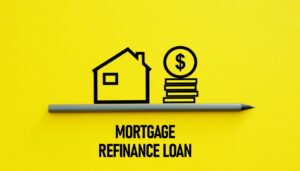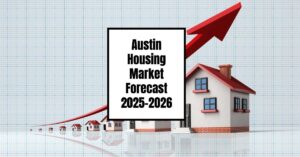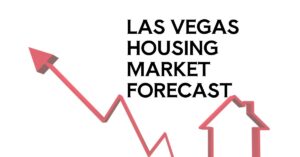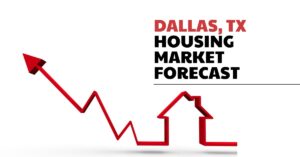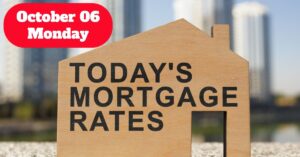It’s a relief to see that 30-year refinance mortgage rates today are down by 19 basis points, a welcome change for anyone looking to adjust their home loan. As of Wednesday, October 8, 2025, the national average for a 30-year fixed refinance rate has dipped to 6.84%, down from 7.03% just a short while ago. This move signals a potential shift in the market, and it's crucial for homeowners to understand what this means for their wallets and for their future financial strategies.
Mortgage Rates Today: 30-Year Refinance Drops Sharply by 19 Basis Points
This isn't just a small blip; it's a noticeable drop that could make a real difference. For those who have been waiting for a better opportunity to refinance, this news from Zillow is a clear invitation to explore their options. We're also seeing that the 30-year fixed refinance rate is down 15 basis points from the previous week’s average of 6.99%. This is a signal that the market is moving, and while it's not a dramatic freefall, it's definitely a step in a more favorable direction.
What Does a 19 Basis Point Drop Actually Mean for Your Monthly Payments?
Let’s break this down in plain English. A “basis point” is simply 0.01% of a percentage. So, a 19 basis point drop means the rate has decreased by 0.19%. While that might sound small, when you're dealing with the large sums involved in a mortgage, even small percentage changes can add up significantly over time.
For example, let's imagine you have a $300,000 mortgage.
- At a rate of 7.03%, your principal and interest payment would be roughly $2,009 per month.
- At the new rate of 6.84%, that payment drops to about $1,960 per month.
That's a saving of approximately $49 per month, or nearly $588 per year. While this example uses round numbers and doesn't include taxes and insurance, it illustrates the tangible financial benefit of this rate drop. For some homeowners, especially those with larger loan balances, this drop can mean even more substantial savings, potentially allowing them to put money towards other financial goals or simply improve their monthly cash flow.
Timing is Everything: Locking in Rates Before Potential Hikes
Here’s where my experience comes into play. I've seen this pattern repeat over the years. When rates start to dip, it's often a sign that the Federal Reserve's actions are beginning to filter through the economy. The Fed made its first interest rate cut of 2025 on September 17, lowering its benchmark rate by a quarter percentage point. This move, combined with other economic factors, is likely influencing these mortgage rate shifts.
However, the market is a dynamic beast. While we're seeing a decrease today, there's always the possibility that rates could climb again. Inflation is still a concern, and the Fed has to walk a tightrope. If inflation rears its head again, the Fed might hold off on further cuts or even consider raising rates again, which would put upward pressure on mortgage rates. This is why, in my opinion, now is a crucial time to seriously consider refinancing if you've been on the fence. Don't wait too long to explore your options, as this window of opportunity might not stay open forever.
Comparing Your Refinance Options: 30-Year Fixed vs. 15-Year Fixed
The headline news is about the 30-year fixed refinance rate, but it's important to remember other options. We're also seeing the 15-year fixed refinance rate decrease, dropping 13 basis points from 5.84% to 5.71%.
Here’s a quick rundown of what each typically offers:
- 30-Year Fixed Refinance:
- Pros: Lower monthly payments, more flexibility in your budget.
- Cons: You'll pay more interest over the life of the loan, build equity slower.
- Ideal For: Homeowners looking to reduce their monthly expenses, free up cash flow, or those who plan to move before paying off the loan.
- 15-Year Fixed Refinance:
- Pros: Lower interest rate overall, pay off your mortgage much faster, save significantly on interest.
- Cons: Higher monthly payments.
- Ideal For: Homeowners who can comfortably afford the higher payments and want to be debt-free sooner, while also saving a substantial amount on interest.
The decision between a 30-year and a 15-year depends entirely on your personal financial situation and goals. If your primary aim is to lower your monthly costs, the 30-year is likely your go-to. If you're looking to pay down your mortgage faster and have the financial capacity, the 15-year could be a better long-term investment.
And for those who have seen their finances change or have a good chunk of equity, ARMs (Adjustable-Rate Mortgages) can be an option, though they come with their own set of considerations. Currently, the 5-year ARM refinance rate has seen a slight uptick of 1 basis point, moving from 7.53% to 7.54%. This is a minor shift, but it highlights how different loan types can react differently to market conditions. ARMs typically start with a lower interest rate than fixed-rate loans, but that rate can increase after the initial fixed period.
How Your Credit Score Impacts Your Refinance Rate Today
It's essential to remember that these national averages are just that – averages. The exact rate you'll be offered depends heavily on your individual financial profile. And the biggest factor in that profile? Your credit score.
Think of your credit score as your financial report card. A higher score shows lenders that you're a responsible borrower who pays bills on time. This means less risk for them, and less risk usually translates into a better interest rate for you.
- Excellent Credit (740+): You’ll likely qualify for the best advertised rates, including the 6.84% for a 30-year refinance, or even lower.
- Good Credit (670-739): You'll still get competitive rates, but they might be slightly higher than the advertised averages.
- Fair Credit (580-669): You might be able to refinance, but expect higher interest rates and potentially fees.
- Poor Credit (below 580): Refinancing can be very challenging, and lenders may decline your application or offer very high rates.
My professional take is this: If your credit score is on the lower side, focus on improving it before you apply for a refinance. Paying down existing debt, ensuring all your bills are paid on time, and checking for any errors on your credit report can make a significant difference. Even a small improvement in your credit score can shave off points from your interest rate, leading to considerable savings over the life of your loan.
The Federal Reserve’s Role in Mortgage Rates: Post-Cut Analysis & Outlook
The Fed’s decision to cut its benchmark interest rate in September was a big deal. It was the first cut after a pause in 2025 and followed three cuts in late 2024. This action is a direct signal that the central bank believes the economy is ready for a bit of a breather, and it aims to make borrowing cheaper.
However, the economic picture is complex. Inflation, though cooling, is still a concern (at 2.9% year-over-year for the core PCE price index), and the economy is still showing robust growth (a 3.8% GDP increase in Q2 2025). This puts the Fed in a difficult position: stimulate the economy without reigniting inflation.
How the Fed's Actions Trickle Down to Your Mortgage:
The Fed’s benchmark rate doesn’t directly set mortgage rates. Instead, it influences longer-term interest rates, particularly the 10-year U.S. Treasury yield. This yield is the key benchmark for 30-year fixed-rate mortgages.
As of October 1, 2025, the 10-year Treasury yield was at 4.12%. This is down from 4.16% just a couple of days prior and below its long-term average of 4.25%.
Here’s the crucial connection:
- Benchmark: Lenders look at the 10-year Treasury yield as a baseline for pricing 30-year mortgages.
- The Spread: Mortgage rates are typically higher than the Treasury yield. This difference, often called the “spread,” accounts for added risks and costs for lenders. Recently, this spread has been wider than usual, meaning mortgage rates haven't fallen as dramatically as Treasury yields might suggest.
So, while the Fed's cut and the subsequent dip in Treasury yields are positive for borrowers, the wider spread is what's keeping mortgage rates from plummeting. This is why the 19 basis point drop is significant but not a freefall.
Recommended Read:
30-Year Fixed Refinance Rate Trends – October 7, 2025
Outlook for the Housing Market and What This Means for You
For potential homebuyers, these slightly lower rates mean a bit more breathing room. Affordability improves, even if it's just a small increment. However, with the spread still wide and inventory low in many areas, competition can still be fierce.
For sellers, this could be a mixed bag. Some homeowners who were “rate-locked” (meaning they have a very low rate they don't want to give up) might be encouraged to list their homes as rates inch down, potentially increasing inventory. However, if buyer demand remains strong, home prices could continue their upward climb.
What I'm watching closely is whether this spread between Treasury yields and mortgage rates narrows. If it does, we could see more substantial declines in mortgage rates, and perhaps even rates dipping below 6% in 2026.
Key Takeaways for You:
- Buyers: The market is more favorable now than it was, but be strategic. Focus on securing the best rate you can and understand the importance of the “spread.”
- Refinancers: If your current rate is above 6.5%, now is definitely the time to explore options. The opportunity to save money has improved.
- Market Watchers: The journey to significantly lower mortgage rates will be gradual. The signals are positive, but the market is still pricing in risk, so expect rates to remain somewhat elevated compared to Treasury yields for a while.
Ultimately, staying informed and being ready to act when opportunities arise is key in today's housing market.
Maximize Your Mortgage Decisions
Thinking about whether to refinance now? Timing is critical, and having the right strategy can save you thousands over the life of your loan.
Norada's team can guide you through current market dynamics and help you position your investments wisely—whether you're looking to reduce rates, pull out equity, or expand your portfolio.
HOT NEW LISTINGS JUST ADDED!
Talk to a Norada investment counselor today (No Obligation):
(800) 611-3060
Recommended Read:
- When You Refinance a Mortgage Do the 30 Years Start Over?
- Should You Refinance as Mortgage Rates Reach Lowest Level in Over a Year?
- NAR Predicts 6% Mortgage Rates in 2025 Will Boost Housing Market
- Mortgage Rates Predictions for 2025: Expert Forecast
- Half of Recent Home Buyers Got Mortgage Rates Below 5%
- Mortgage Rates Need to Drop by 2% Before Buying Spree Begins
- Will Mortgage Rates Ever Be 3% Again: Future Outlook
- Mortgage Rates Predictions for Next 2 Years
- Mortgage Rate Predictions for Next 5 Years
- Mortgage Rate Predictions for 2025: Expert Forecast
